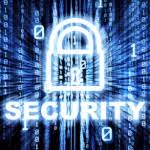Battling Ransomware Protecting Your Data and Yourself.
Ransomware. The very word sends shivers down the spines of individuals and organizations alike. This malicious software encrypts your files and demands a ransom payment in exchange for the decryption key, effectively holding your data hostage. But fear not! While ransomware is a serious threat, there are proactive steps you can take to significantly reduce your risk and protect your valuable information.
This article will equip you with essential strategies to defend against ransomware attacks and avoid the devastating consequences of data compromise.
1. Superhero Status: Keeping Your Software Updated
Think of software updates as reinforcements for your digital defenses. Software vulnerabilities are like open doors for cybercriminals. Developers constantly release updates to patch these vulnerabilities and close those doors.
* Operating System (OS): Ensure your Windows, macOS, Linux, or mobile OS is set to automatically update.
* Applications: Regularly update your web browsers, office suites, antivirus software, and other applications.
* Plugins: Be mindful of browser plugins like Flash and Java. Many are outdated and insecure. Consider disabling or uninstalling them if you don’t need them.
2. The Golden Rule of Data Security: Implement a Robust Backup Strategy
Imagine losing years of photos, important documents, and irreplaceable data in an instant. A comprehensive backup strategy acts as your safety net, allowing you to recover your files even if ransomware strikes.
* The 3-2-1 Rule: Aim for three copies of your data, stored on two different media, with one copy stored offsite.
* Onsite Backups: Utilize external hard drives or Network Attached Storage (NAS) devices for quick and easy recovery.
* Offsite Backups: Leverage cloud-based backup solutions like Google Drive, Dropbox, OneDrive, or specialized backup providers for disaster recovery.
* Regular Testing: Don’t just set it and forget it! Regularly test your backups to ensure they are working correctly, and you can restore your data successfully.
3. Fort Knox Passwords: Strong Credentials are Key
Weak passwords are like leaving the front door unlocked. Cybercriminals can easily crack them and gain access to your accounts and systems.
* Length Matters: Aim for passwords of at least 12 characters, preferably longer.
* Complexity is Crucial: Use a combination of uppercase and lowercase letters, numbers, and symbols.
* Uniqueness is Essential: Never reuse passwords across multiple accounts.
* Password Managers: Consider using a reputable password manager to generate and store strong, unique passwords securely.
* Multi-Factor Authentication (MFA): Enable MFA whenever possible. This adds an extra layer of security, requiring a second form of verification, such as a code sent to your phone.
4. Email Vigilance: Spotting Phishing Attacks
Phishing scams are a common entry point for ransomware. Cybercriminals craft emails designed to look legitimate, tricking you into clicking malicious links or opening infected attachments.
* Be Suspicious: Be wary of emails from unknown senders, especially those requesting personal information or urging you to take urgent action.
* Inspect Links: Hover over links before clicking to see the actual URL. If it looks suspicious or doesn’t match the sender’s domain, don’t click it.
* Verify Attachments: Never open attachments from unknown sources. If you’re unsure about an attachment from a known sender, contact them directly to verify its authenticity.
* Trust Your Gut: If something feels off about an email, err on the side of caution and delete it.
5. Real-Time Defense: Utilizing Security Software
Security software provides a crucial layer of real-time protection against ransomware and other malware.
* Antivirus Software: Invest in a reputable antivirus program with real-time scanning capabilities. Keep it updated to detect the latest threats.
* Anti-Malware Software: Consider supplementing your antivirus with anti-malware software specifically designed to detect and remove ransomware.
* Firewall: Ensure your firewall is enabled and configured correctly to block unauthorized access to your network.
6. Education is Empowerment: Spreading Awareness
Ransomware is a constantly evolving threat. Educating yourself and others about the risks is a critical step in prevention.
* Stay Informed: Follow cybersecurity news and blogs to stay up to date on the latest ransomware threats and prevention techniques.
* Train Yourself & Others: Conduct regular security awareness training for yourself, family members, and employees. Cover topics such as phishing, password security, and safe browsing habits.
* Simulate Phishing Attacks: Consider conducting simulated phishing attacks within your organization to test employees’ awareness and identify areas that need improvement.
Conclusion: Proactive Prevention is the Best Defense
Ransomware attacks can be devastating, but they are not inevitable. By implementing the strategies outlined in this article, you can significantly reduce your risk and protect your data from falling victim to these malicious threats. Remember, a proactive approach to cybersecurity is the best defense against ransomware and other forms of cybercrime.








